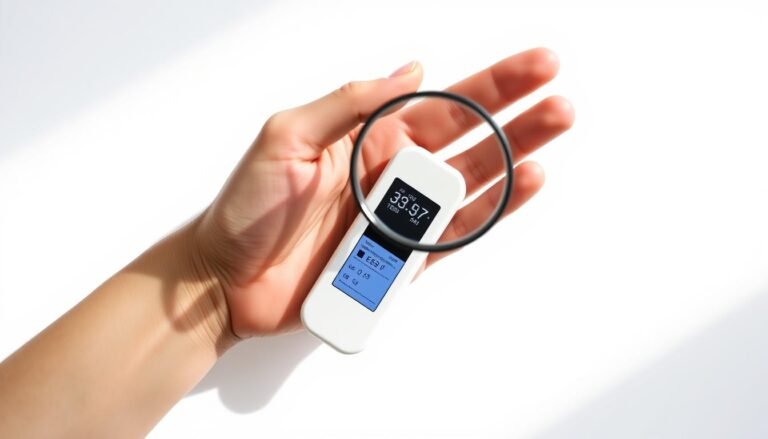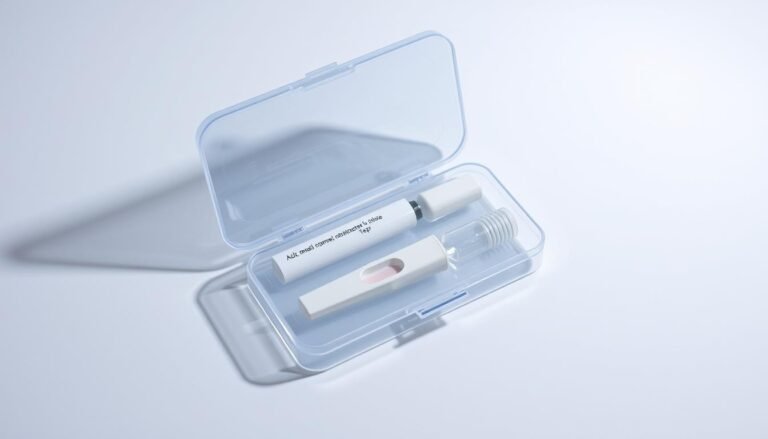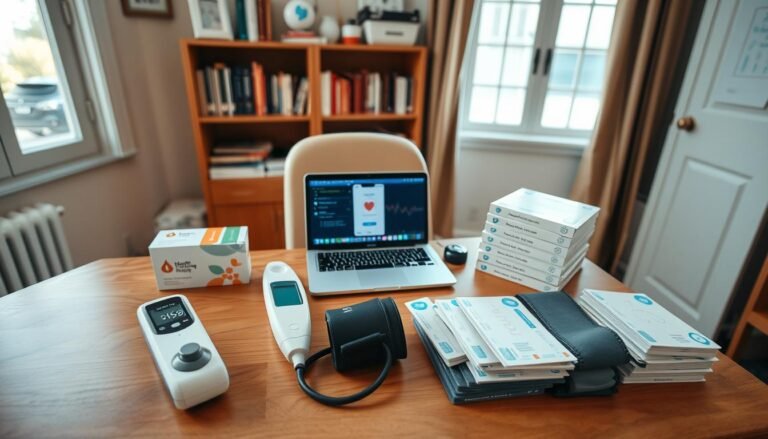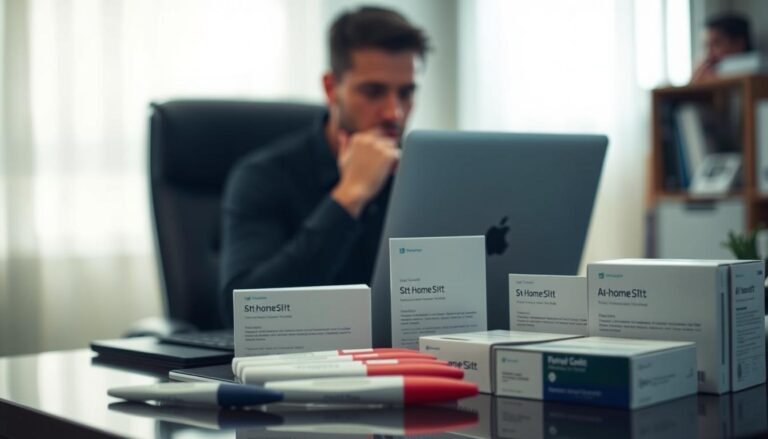Complete Guide to At-Home Health Testing: What You Can Test For
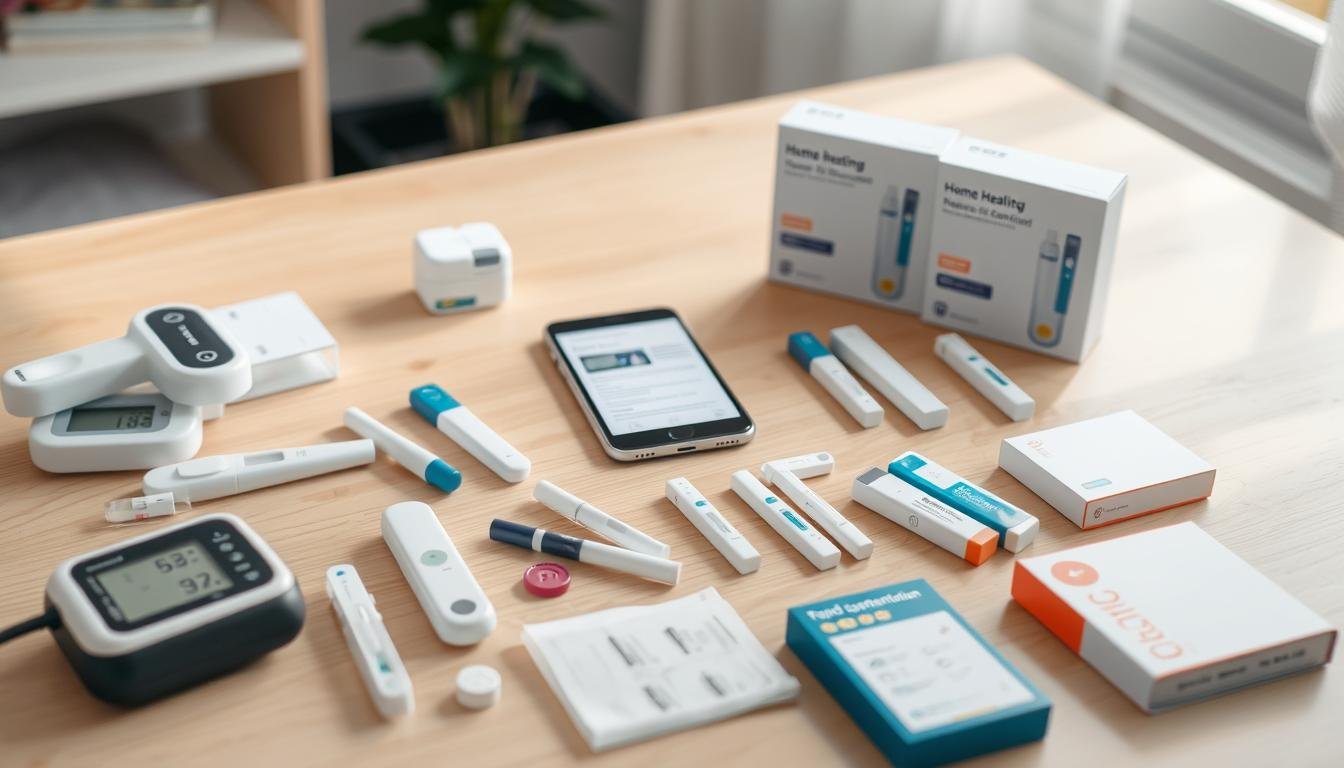
Have you ever wondered which common checks you can do quickly and privately from your own place?
We introduce this at home health testing guide as a practical resource that explains what people can test today, how each test works, and when self-use makes sense for early screening or routine monitoring.
In this article we map the scope of available tests and kits in India and worldwide — from pregnancy and blood glucose to infectious disease screens and genetic insights.
We also share clear information on choosing reliable kits, collecting samples correctly, reading results, and when to follow up with a clinician.
Read quickly or scan sections: we set expectations so you can find the facts you need and decide which test or next step fits your situation.
Why At-Home Testing Matters Today: A Present-Day Overview
Fast access to simple diagnostic tools reshapes how people detect and manage common disorders today.
We see more use for these checks to screen for high cholesterol, certain infections, early pregnancy, and to track chronic conditions like diabetes and hypertension.
Rapid COVID-19 tests, for example, can give results in 30 minutes from a nasal swab. Major department health bodies such as the CDC and the FDA have issued guidance and device information that helped scale this trend.
More choices, quicker logistics, and clearer digital delivery make self-use kits easier to adopt. This change reduces travel, preserves privacy, and speeds actionable information for families and caregivers in busy Indian cities.
These tools work best when paired with professional care. Confirmatory laboratory checks or clinician-led treatment remain important for many conditions.
| What Changed | Who Benefits | Next Steps |
|---|---|---|
| Faster results and digital reporting | Busy urban families and caregivers | Use tests for screening, then consult clinicians |
| Wider test choices and easier kits | People managing chronic conditions | Confirm abnormal results with labs or doctors |
| Endorsements and clearer guidance | Public health programs and communities | Follow department health advice and local protocols |
What At-Home Medical Tests Are and How They Work
We describe two main pathways for private checks so readers know what to expect from each method.
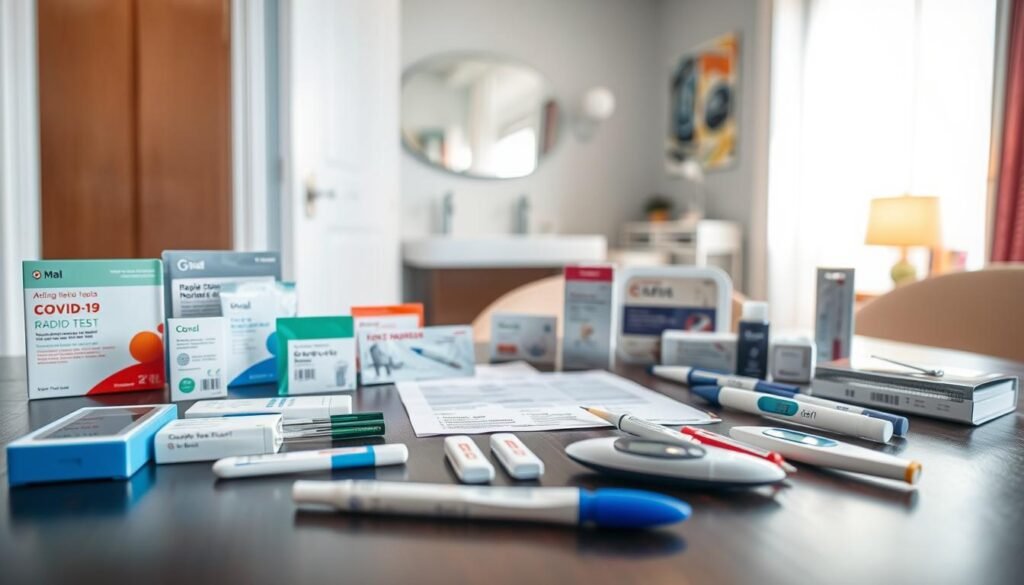
Home use tests vs. self-collection tests
Home use tests give a visible result in minutes. You apply a drop of blood, urine, or saliva to the device and read the result immediately.
Self-collection kits require you to collect a sample, pack it, and mail it to a laboratory. Results arrive through a secure portal or provider.
Common samples and handling
Typical samples include finger-prick blood, urine, saliva, and stool. Some markers need serum or a dried blood spot for accurate analysis.
Stability matters: a stool or nasal swab may need refrigeration or fast shipping. Follow timing and volume instructions to avoid errors.
Where to buy kits in India
Kits are sold on major e-commerce marketplaces, local pharmacies, and directly from a company’s official site. Many products do not need a prescription.
Check for authorized approvals, prepaid shipping, a proper biohazard mailer, and a secure results portal before purchase.
| Feature | Home use tests | Self-collection kits |
|---|---|---|
| Result timing | Minutes | Days (lab analysis) |
| Common samples | Blood drop, urine, saliva | Dried blood spot, urine, stool, swab |
| Best for | Quick decisions, simple screens | Broader panels, higher sensitivity |
| Buying tips | Check authorization and clear instructions | Confirm prepaid mailer and secure portal |
What You Can Test For at Home: From Pregnancy to Genetic Tests
We list common checks you can complete privately, from pregnancy screens to genetic panels. Some deliver instant visual results, while others need a mailed sample and lab analysis.
Pregnancy tests: HCG detection and when to test
Pregnancy kits detect HCG in urine. Using first-morning urine often improves sensitivity and reduces false negatives.
Results usually display as lines or symbols. If cycles are irregular, repeat after a few days or consult your clinician for confirmation.
Blood glucose tests: monitoring diabetes with finger-prick blood tests
Glucose meters use a lancet and a small drop of blood. Regular meter readings help track trends; periodic lab blood tests validate long-term control.
Follow target ranges set with your clinician and keep meters calibrated per the manufacturer and regulatory guidance.
Fecal occult blood tests: screening for colorectal cancer
Occult blood kits ask you to collect tiny stool samples on a card and mail them for lab analysis. A positive occult blood result can come from several causes, not only cancer.
Positive findings usually prompt a diagnostic colonoscopy and further evaluation by a specialist.
Infectious disease tests: HIV, hepatitis C, and COVID-19 rapid tests
Options include oral-fluid or finger-prick HIV tests, hepatitis C blood kits sent to a lab, and rapid COVID-19 antigen swabs that get results in under 30 minutes.
Counseling and confirmatory lab tests are important for reactive results and care planning.
Genetic tests: higher risk indicators and limitations of consumer kits
Saliva or cheek swabs can show genetic markers linked to higher risk for some conditions. These are risk indicators, not diagnoses.
Confirmatory clinical testing and genetic counseling are recommended before changing treatment or screening plans.
- Choose test kits that state what tests provide, the required sample, and next steps for abnormal findings.
- Expect instant results for many antigen or pregnancy tests; mail-in panels and genetic tests take days to weeks to get results.
| Category | Sample | Typical turnaround |
|---|---|---|
| Pregnancy | Urine | Minutes |
| Blood glucose | Finger-prick blood | Minutes |
| Occult blood | Stool card | Days |
| Genetic tests | Saliva/cheek swab | Days–weeks |
Our At Home Health Testing Guide: Choosing Reliable Test Kits
We help you pick kits and manufacturers that give trustworthy results and useful next steps. Start by checking certifications, validation data, and the company’s track record.

Check lab quality and manufacturer credibility
Prefer kits tied to certified laboratories and well-known manufacturers. Look for traceable lot numbers and quality management statements on packaging.
Assess methods and claimed accuracy
Confirm the sample type is appropriate for the condition measured. We favor panels backed by published accuracy data over vague marketing claims.
Results delivery and post-test support
Expect 2–5 day turnaround for mail-in tests and immediate readouts for some rapid tests. Check if the company offers consultations or referral pathways for abnormal results.
- Transparent validation and clear instructions reduce user error for consumers.
- Compare costs, subscription options, and whether receipts support reimbursement.
- Prefer firms that follow food drug administration guidance and department health recommendations.
| Factor | What to check | Why it matters |
|---|---|---|
| Manufacturer | Certifications, reviews | Ensures reliable production |
| Methods | Sample type, panel relevance | Improves clinical value for conditions |
| Support | Results access, consultations | Aids timely care health decisions |
Using Test Kits Correctly: From Sample Collection to Getting Results
A short routine before collecting any specimen can prevent common errors and false results.
Prepare and read instructions
We always start by reading the leaflet. Confirm the test is authorized for home use and check expiry dates. Follow timing windows exactly and avoid changing medicines based on a single result without clinician input.
Collecting viable samples
For a reliable blood sample, wash and dry hands, use the lancet at the right depth, and apply the correct droplet to the strip or card. Nasal swabs should be gently rotated; saliva and urine need the correct volume and container. Stool kits require careful transfer to avoid contamination.
Getting and understanding results
- Rapid tests give visual lines or displays in minutes; follow read windows to avoid false reads.
- Mail-in panels typically return via secure portals in 2–5 days after the lab receives the sample.
- Keep a log with date, lot number, and symptoms so your provider can interpret findings and advise next steps.
| Step | What to check | Typical outcome |
|---|---|---|
| Before collection | Authorization, expiry, instructions | Valid process and fewer errors |
| During collection | Proper technique for each sample | Usable samples and reliable analysis |
| After collection | Seal, package, and ship per company rules | Quick lab receipt and fast get results |
Benefits, Risks, and Regulation: What Informed Consumers Should Know
Self-collected checks bring clear benefits but also new responsibilities for users. Weighing convenience against accuracy helps consumers make safe choices.
Potential benefits
These products can spot diseases earlier and boost screening uptake. For example, HIV self-testing has doubled uptake in some settings.
They also let people monitor chronic conditions with fewer clinic visits and more privacy. That ease can improve ongoing care and engagement.
Key risks
Main risks include false positives or negatives, poor sample handling, and damage during shipping that alters results.
Such errors can prompt inappropriate changes in care or delayed treatment. We recommend confirmatory lab tests and clinician review for unexpected findings.
Regulatory landscape
Regulators like the food drug administration warn that direct-to-consumer claims sometimes outpace evidence. The EU IVDR now demands stronger clinical performance data than the older IVDD.
Department health bodies seek to balance access with safeguards by insisting on usability, clear limits of performance, and post-market surveillance.
| Aspect | Benefit | What consumers should check |
|---|---|---|
| Screening | Earlier detection of diseases | Validation data and follow-up plan |
| Monitoring | Convenience for chronic care | Sample stability and repeatability |
| Regulation | Growing oversight (IVDR, FDA) | Department health endorsements and clear labeling |
How We Evaluate At-Home Tests for Quality and User Experience
We use a clear, repeatable process to judge each at-home test. Our aim is to show which products give useful, reliable test results and which fall short for people in India.
Medical credibility
We check scientific validity by reviewing published data, peer-reviewed studies, and claimed analytical performance. We look for clinical performance figures that match real-world use, not just marketing language.
We confirm laboratory certifications and chain-of-custody procedures so test results are generated in competent labs with secure data handling.
User factors and post-result support
We walk through the full user process: ordering, receiving kits, sample collection, shipping, and result delivery. Ease of use matters. Clear instructions, images, and timing windows reduce user error.
We also assess whether consultations are available and how care health pathways are handled for abnormal findings. Timely clinician follow-up and exportable test results are scored highly.
| Evaluation Area | What We Check | Why It Matters |
|---|---|---|
| Scientific validity | Peer-reviewed data, accuracy metrics | Shows if tests provide reliable markers for conditions |
| Laboratory & data | Certifications, chain-of-custody, privacy | Ensures secure, accurate laboratory results |
| User experience | Instructions, collection ease, portal access | Reduces errors and improves first-time success |
| Result handling | Turnaround time, consultations, exportable PDFs | Speeds clinical decisions and follow-up care |
Conclusion
In closing, we offer clear actions to turn a single result into useful medical information. Use authorized kits and follow instructions exactly to collect a valid sample. This reduces error and saves time when you review results with your clinician.
Choose tests from reputable sources and plan how you will share findings with your care team. Pregnancy checks, glucose monitoring, infectious disease screens, and many screening panels may also be used responsibly. Genetic screens that show higher risk should prompt confirmatory clinical follow-up.
We support products aligned with department health and food drug administration guidance. When people pair convenient home testing with timely clinical care, these tools can help detect diseases earlier and support ongoing care.
